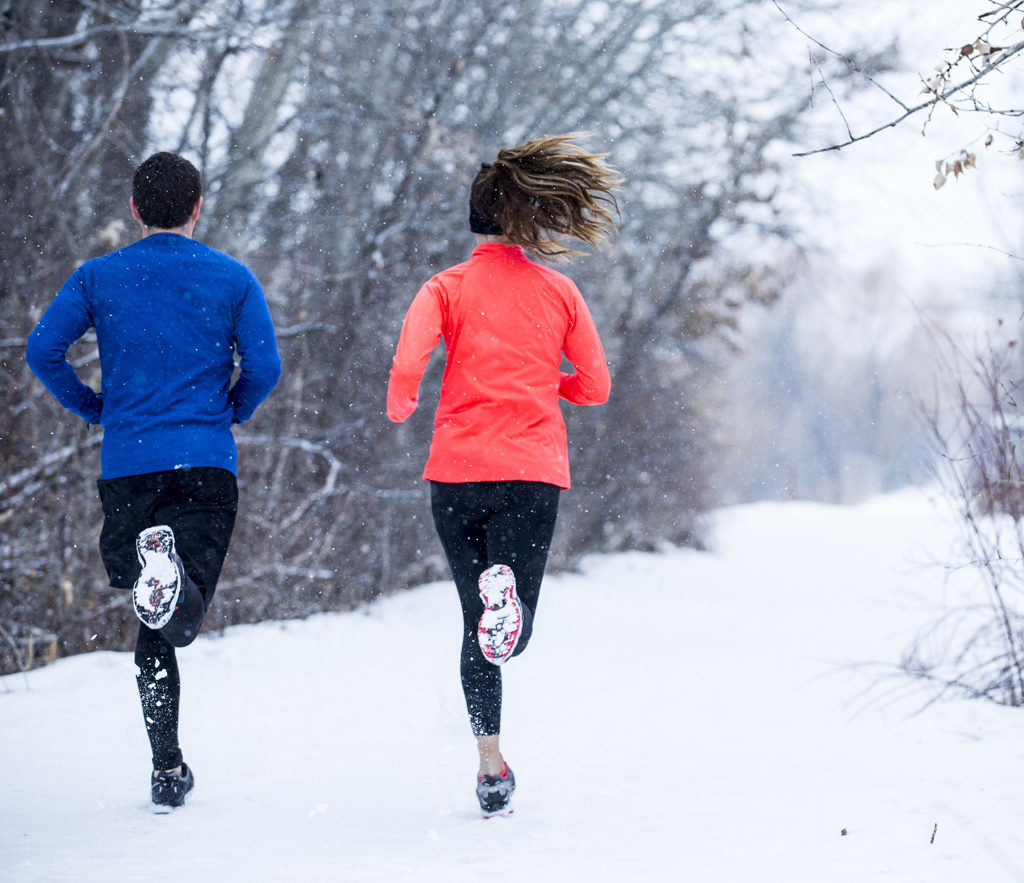January 24, 2019
Winter Running Safety Tips
It is that time of year when the temperature begins to drop and the days are shorter. Because of this many people believe it means the morning and evening outdoor runs/walks need to come to an end. This is very far from the truth, in my personal opinion; it is my favorite time of the year to go for morning runs. I find it very relaxing and peaceful to be out there in the dark with not many people around.
come to an end. This is very far from the truth, in my personal opinion; it is my favorite time of the year to go for morning runs. I find it very relaxing and peaceful to be out there in the dark with not many people around.
Because of the darkness though, some guidelines must be followed for safe running or walking.
- Use reflective clothing: When you are in street clothes in the dark a driver can only see you from 200 ft away. This is increased up to 1200 ft with reflective wear. Some of the best items to wear are reflective harnesses as well as reflective vests. There is also reflective tape that you can buy to put on pieces of clothing. Most clothing comes with small reflective pieces on them, but that usually isn’t enough. Over the last couple of years many running apparel companies are coming out with clothing specifically to address reflective wear. Also a headlamp is a great addition, there are runner specific ones that work great.
- Always run against traffic: You will be able to avoid the traffic easier when you can see the drivers coming.
- Run in well-lit areas: Make sure the roads you are running on have streetlights. This will allow you to watch for uneven surfaces, especially if you are running on the sidewalks. You are also able to see the surroundings around you better.
- Know your surroundings: When running in the dark you need to be more aware of your surroundings than normal, therefore; get rid of the music and pay attention to what is going on. If you don’t feel safe in an area, or are unfamiliar with an area – don’t run there.
- Have ID – Make sure people know that you are going out for a run, how long you plan to go for and the path you plan to take. Also have an ID of some sort on you. There are the Road ID’s that you can get on-line for identification that you can attach to your shoes. If you can, run with a buddy or take a phone with you in case something happens.
If you follow the above mentioned guidelines your winter outdoor walking or running will be much more enjoyable.
Another thing a lot of people have questions about this time of year is what to wear. There are multiple things you need to consider; the time of day, temperature, wind, intensity of work out as well as conditions (sunny, cloudy, rainy or snowy). For running the general rule is to dress 20 deg warmer than what it is (with wind chill). So yes, when you initially start, you will be a little cool. Below is a general guideline that I use when running and have had great success with it. It is especially important in the cooler weather to wear dry wicking clothes, to help keep your sweat off your body. A lot of winter clothing will have tags telling you what temp it is best for.
50 deg and above: Shorts and tank top/shirt.
40-50 deg: Light long sleeve shirt and light running tights. At this point I usually start to wear a hat and light gloves as well.
30-40 deg: Use a base layer (light long sleeve shirt), under a light pullover or jacket. Continue to use the lighter tights.
20-30 deg: Use a slightly warmer pair of tights, and upper body base layer (I use SmartWool) and continue with the lighter jacket/pullover.
0 – 20 deg: Continue with the warmer tights and upper body base layer, and I will wear either an additional base layer or heavier jacket. I will also start using a warmer pair of gloves/mittens and have protection around the neck at this time.
0 and below: At this time I am pulling out the specific warm tights for 10 deg and colder. For the upper body I will use SmartWool base layer as well as a warmer pullover/jacket made for 10deg or below. Some people use protection around entire face at this time.
When the wind chill hits -15 degs or less, take it inside. Frostbite can happen within 30 minutes
The above suggestions are different for everyone and also depend on how long and hard the workout is but it will give you a general idea of where to start. Go to a running store in the area and they will be more than happy to help you. It may sound like you need multiple different items, but you don’t. I have 1 pair of tights and jacket specifically for 10 deg or colder. You can also do more layering of the warmer weather clothing for the cooler weather. A great website to help you decide what to wear is: http://www.runnersworld.com/what-to-wear. You enter some details and it will give you a general idea of what to wear.
One last thing is running in the snow. I recommend a Gore-Tex running shoe to prevent feet getting wet. Using Yaktrax for improved traction in the snow and ice is very helpful as well. I find them most helpful in the ice and light snow. In deeper snow they don’t always get the best traction.
Enjoy your winter running!
Amie Ramczyk, MPT
FHC Fort Therapy and Sport Center
